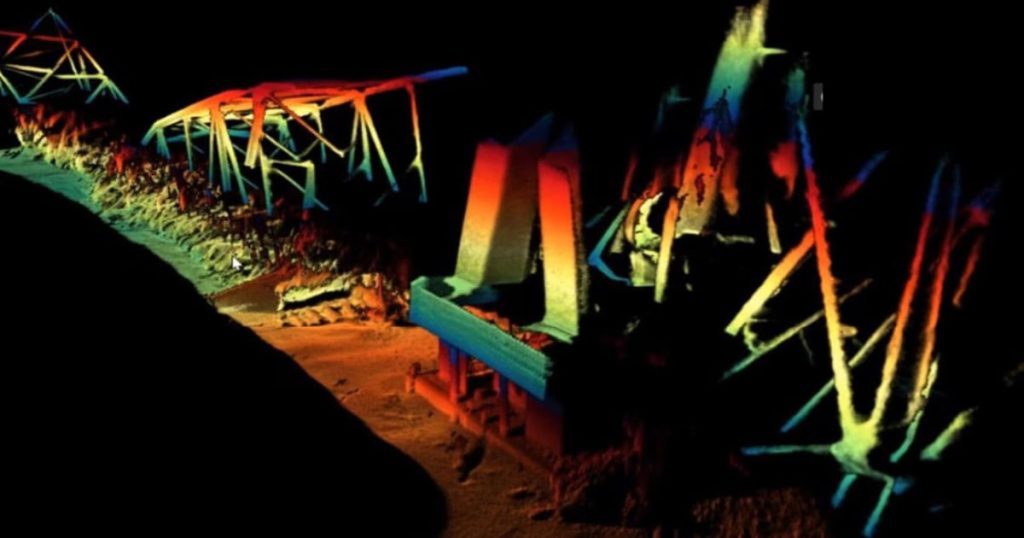The NAVSEA officials used the Echoscope, a high-resolution 3D/4D sonar technology, for their recovery efforts. This technology utilizes sound waves to send out acoustic signals that bounce off of solid objects. By measuring the signal strength and the time it takes for the signals to return, the Echoscope can generate detailed maps and images of the underwater environment. These maps and images are vital in recovery missions as they help locate and identify objects and obstacles in the water. In this case, NAVSEA officials used the Echoscope to aid in their recovery efforts.
The Echoscope, developed by CODA Octopus Group, is touted as the world’s highest resolution real-time sonar technology. This means that it provides extremely detailed and accurate images of the underwater environment in real-time. The high resolution of the Echoscope allows NAVSEA officials to effectively navigate and operate in challenging underwater conditions. The technology’s ability to generate real-time images enables officials to quickly and efficiently locate and recover objects from the water. This makes the Echoscope an invaluable tool for organizations like NAVSEA in conducting recovery missions.
Sonar technology, such as the Echoscope, has long been used in various underwater operations, including search and recovery missions. By utilizing sound waves to create images of the underwater environment, sonar technology allows officials to visualize the underwater landscape and identify objects of interest. In recovery missions, sonar technology plays a crucial role in locating and recovering objects from the water. The detailed maps and images generated by sonar technology provide valuable information that helps officials plan and execute their recovery efforts effectively.
The use of sonar technology like the Echoscope in recovery missions demonstrates the importance of advanced technology in underwater operations. By providing high-resolution, real-time images of the underwater environment, sonar technology enables officials to navigate and operate in challenging underwater conditions. The detailed maps and images generated by sonar technology play a critical role in recovery efforts by helping officials locate and recover objects from the water. As technology continues to advance, organizations like NAVSEA will increasingly rely on tools like the Echoscope to enhance their capabilities in underwater operations.
Overall, the use of the Echoscope by NAVSEA officials in their recovery efforts highlights the significance of high-resolution sonar technology in underwater operations. The ability of the Echoscope to provide detailed, real-time images of the underwater environment allows officials to effectively locate and recover objects from the water. Sonar technology, with its sound wave-based imaging capabilities, is instrumental in helping officials visualize the underwater landscape and identify objects of interest. As organizations like NAVSEA continue to conduct underwater operations, advanced technologies like the Echoscope will play a vital role in enhancing their capabilities and success in recovery missions.
In conclusion, the use of advanced sonar technology like the Echoscope by NAVSEA officials showcases the crucial role of technology in underwater recovery missions. The high resolution and real-time imaging capabilities of the Echoscope enable officials to navigate and operate effectively in challenging underwater conditions. Sonar technology’s ability to generate detailed maps and images of the underwater environment is essential in identifying and recovering objects from the water. As technology continues to evolve, organizations like NAVSEA will increasingly rely on advanced tools like the Echoscope to enhance their capabilities in conducting successful underwater operations.


